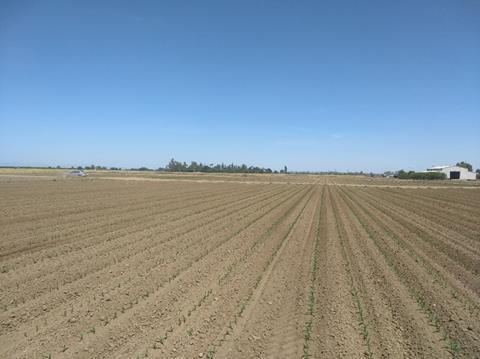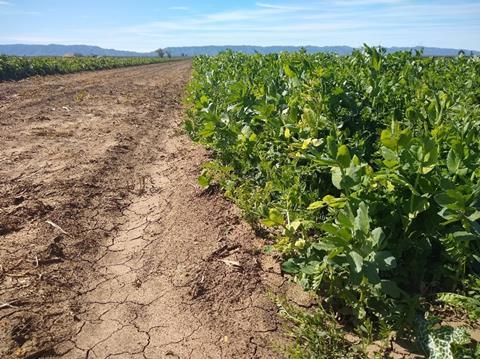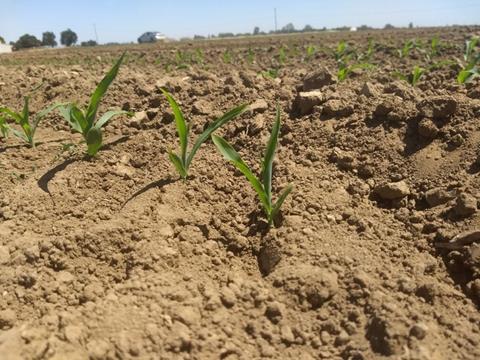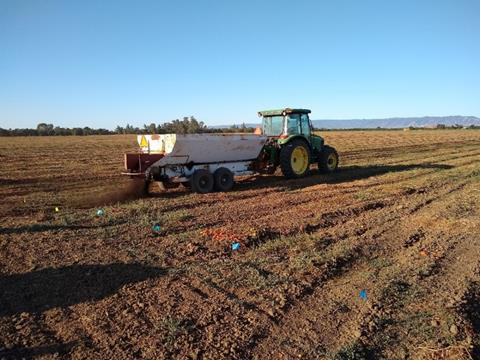Outbreaks of foodborne diseases are often associated with contaminated produce. Responding to recent food-safety regulations and pressure from the produce industry, fresh-produce growers have altered their farming practices to mitigate the risks associated with foodborne pathogens.
In particular, many individuals within the fresh produce industry aspire to create sterile, hospital-like growing conditions that limit the risk of pathogens being introduced to farm fields. For example, recent surveys suggest growers have begun to refrain from applying animal-based soil amendments to produce fields, citing food safety concerns.

While raw manures are known to represent a significant source of foodborne pathogens, proper composting techniques (e.g. heat treatments) are known to be quite effective in reducing foodborne pathogen concentrations. They play well-known roles in improving soil health. Finally, recent studies suggest that adding organic matter to the soil may increase the diversity of indigenous soil bacterial communities and, in doing so, promote bacterial species that are effective at suppressing foodborne pathogens. Thus, rather than increasing food-safety risks, it is possible that animal-based composts could protect soils from foodborne pathogens by bolstering bacterial antagonists. That is, soil bacteria could function as natural biological control agents against foodborne pathogens. However, it remains unclear who the most vital members of the community are and how farmers can recruit/promote them on their farm fields.

To study the cascading effects of soil management on foodborne pathogen suppression in soils, we leveraged the long-term (27-year) ‘Century Experiment’ at the Russell Ranch Sustainable Agriculture Facility, operated by the University of California at Davis. We compared four soil treatments: (1) organic fields with composted poultry litter and winter cover crops; (2) conventional fields with synthetic fertilisers but no composts or cover crops; (3) fields that included winter cover crops and fertilisers but no composts; and (4) a more recent, three-year-old treatment with composts and fertilisers but no cover crops. In 2019, we acquired soil samples throughout the growing season, when all the one-acre plots were growing corn. We measured the physicochemical properties of each soil sample and used high-throughput sequencing to characterise the bacterial communities. Finally, we conducted pathogen ‘bioassays’ in the lab, where we inoculated soils with known concentrations of Salmonella enterica and Listeria monocytogenes and then quantified pathogen concentrations 10 and 30 days later.

As expected, we found that organically managed soils (i.e. soils with composts and cover crops) had more soil nutrients, organic matter and soil moisture compared with conventionally managed soils. Similarly, bacterial communities were more diverse and compositionally distinct from conventionally managed soils. But what about pathogen survival? We found that both Listeria and Salmonella persistence strongly depended on soil chemical and microbial properties. Most critically, persistence was much higher in soils with bacterial communities more similar to those found in conventional soils. As a result, the survival of both pathogens was lower in organic soils with compost additions, relative to conventional soils. This exciting result suggests that composts may promote soil bacteria that are especially adept at suppressing foodborne pathogens. However, we also found that the differences in bacterial communities between soil management treatments dissipated over the growing season. Correspondingly, we did not observe any difference in pathogen suppression between treatments by the time of harvest.

Looking forward, our findings suggest promising new research directions. First, how long does it take to develop pathogen-suppressive soils? While we expected the more recent ‘compost-only fields’ to be quite distinct from the long-term ‘organic fields,’ our models did not suggest that bacterial survival differed between the treatments. Thus, it is possible that farmers could enhance the ‘pathogen suppressiveness’ of their soils over relatively short periods. Second, which bacteria are most important in regulating pathogen survival? Currently, we are attempting to identify the ‘key players’ through pathogen challenge experiments, in which pathogens are iteratively grown alongside one of >13,000 different bacterial isolates from the most suppressive soils in our study.

Regardless of outcome, our study suggests that properly treated composts may not increase food-safety risks and thus can represent a safe, sustainable alternative to conventional fertilisers. Indeed, by enhancing soil quality, building organic matter and adding soil nutrients, composts may promote a shift of bacterial communities and create a less hospitable environment for the foodborne pathogens. Growers could thus consider reassessing the practice of entirely abandoning properly treated animal-based soil amendments, not only for the soil-health benefits but also for the potential improvements to food safety.









No comments yet